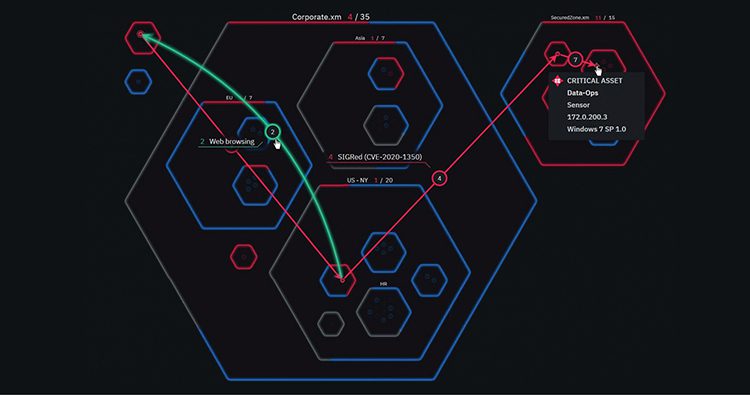If you have an extremely valuable asset, you need a smart strategy to protect it.
Unfortunately, many organizations are operating without one. That lack of a safety net is especially concerning when the macro cybersecurity environment is so challenging. The U.S. Federal Bureau of Investigation reports that nearly 900,000 Internet crimes were reported in 2021 — a staggering 90% increase in just two years.
Additionally, data breaches in Q1 2022 increased significantly over breaches in Q1 2021 — the third consecutive year this jump has occurred.
For organizations seeking to mitigate risk, taking a smart approach to vulnerability management is key.
Typically, vulnerability management strategies take a holistic, ongoing approach to managing security holes within an organization’s systems, networks, applications, etc. These vulnerabilities are then identified, assessed, and remediated as quickly as possible.
To help you better understand the gravity of this issue, let’s take a closer look at the fundamentals of vulnerability management, and how it differs from another related concept: Vulnerability assessments.
Vulnerability Assessment vs. Vulnerability Management
To better illuminate this difference, let’s consider it through the lens of a physical property owner. If you own a valuable building, you probably take a number of steps to protect it.
- You maintain it
- You insure it
- You make sure that the doors and windows and locked
- You set the alarms
All of these steps combined could be referred to as managing the risk to the property and its contents.
Now, what if you hired someone to just test your alarms and exterior defenses and report back? Another word for that would be an assessment. The management of your property’s security is an ongoing process composed of everything relevant to the process, while your assessment is a one-time event with specific goals or benchmarks.
Cybersecurity vulnerabilities are approached similarly. Vulnerability management is the overarching and ongoing strategy, while vulnerability assessments are a specific tool used within that broader management strategy.
Now that we’ve covered the differences between these two approaches, let’s look at some related concepts and how they differ.
Vulnerability Assessment vs. Penetration Testing
Vulnerability assessments share many of the same characteristics as penetration tests, as both allow organizations to rigorously probe their defenses. Pen tests may be manual or automated. In manual scenarios, human testers play the role of “ethical hackers” and use their expertise to try and breach an organization’s defenses and exfiltrate critical assets. In doing so, penetration testers assume the perspective of attackers and help defenders understand not only if vulnerabilities exist, but also how they may be exploited and the cost of such an event.
Vulnerability Management vs. Risk Management
While vulnerability management is an ongoing process of managing security gaps, risk management takes a broader view of anything that could pose a threat to an organization. A sound risk management strategy allows risks to be identified, analyzed, and mitigated effectively. This approach helps organizations understand not only the vulnerabilities that exist but the scale of the damage that could occur should they be exploited. A risk and vulnerability assessment, conducted under the umbrella of risk management, can provide an especially broad perspective on the strength of an organizational security posture.
Threat Assessment vs. Vulnerability Assessment
Vulnerability assessments attempt to identify the gaps of weaknesses that undermine an organization’s security. Threat assessments study the entities and tactics and techniques used to threaten an organization. Risk, meanwhile, is a calculated assessment of both threats and vulnerabilities.
How XM Cyber’s Attack Path Management Enables Effective Risk-Based Vulnerability Management
Many of the tools discussed above offer one piece of the puzzle. Yet to practice good information management and fully protect an organization’s critical assets, you must have a clear understanding of the interlocking nature of threats, vulnerabilities, and risk.
Standard scan-based assessments, pen tests or even conventional approaches to the more comprehensive practice of vulnerability management all fall short in this regard.
For optimal security, these practices must be supported with advanced attack path management tools. These tools allow you to gain deeper visibility into your assets and environments, uncovering the attack paths that jeopardize your most valued assets.
XM Cyber’s attack path management platform offers the market’s deepest possible visibility into these vulnerabilities and threats. It provides a continual process for finding unknown assets, poorly configured network devices and disconnected IT environments — all the elements that make life easy for cyber-attackers.
In addition to a deep asset vulnerability assessment, XM Cyber also provides the critical context needed to understand and mitigate risk. By showing you where vulnerabilities exist, how threat actors are most likely to exploit them, and the damage that could be caused, a full and detailed risk assessment becomes possible.
In a cybersecurity landscape that grows more difficult to navigate every day, the need for XM Cyber’s approach to managing vulnerabilities and mitigating risk has never been more urgent.
Related Topics



